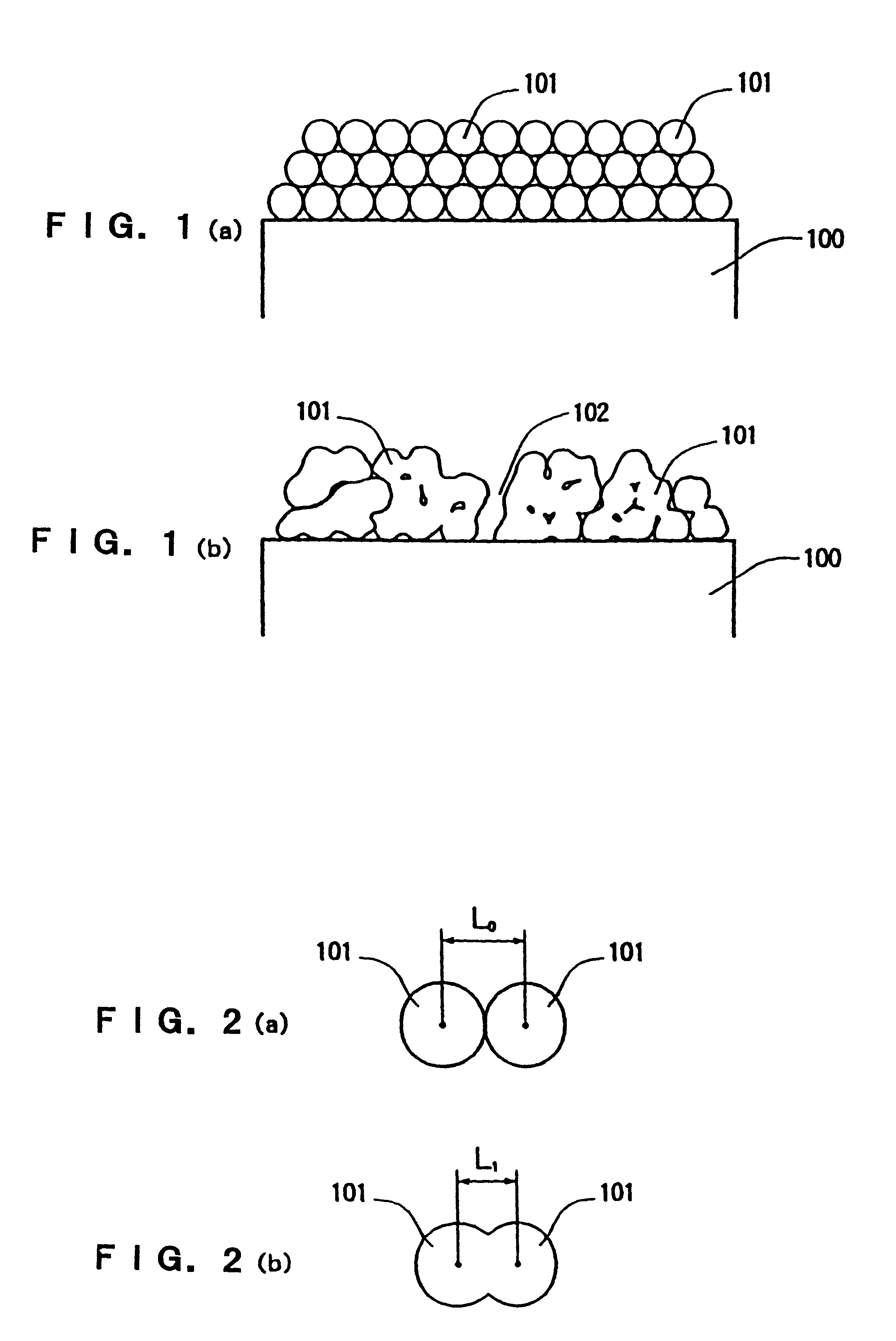Multi-functional material with photocatalytic functions and method of manufacturing same
a multi-functional, photocatalytic technology, applied in the direction of catalyst activation/preparation, natural mineral layered products, metal/metal-oxide/metal-hydroxide catalysts, etc., can solve the problems of high manufacturing cost, unable the inability to meet the requirements of the application, etc., to achieve excellent photocatalytic effects
- Summary
- Abstract
- Description
- Claims
- Application Information
AI Technical Summary
Benefits of technology
Problems solved by technology
Method used
Image
Examples
##ventive example 28
INVENTIVE EXAMPLE 28
A colloidal suspension in ammonia of TiO.sub.2 sol having a crystal diameter of 0.01 .mu.m was coated, in different amounts for respective specimens, on a square tile base with each side 15 cm long by spray coating and then fired at a temperature of 700.degree. C. or higher and 900.degree. C. or lower, forming a photocatalytic layer. The produced specimens were evaluated for crystal diameters of anatase TiO.sub.2 particles, porosities on the layer surfaces, and deodorizing, wear-resistant, and peeling-resistant capabilities.
The deodorizing capability was evaluated by measuring R.sub.30 (L) which represents a removal ratio after being irradiated with light. Specifically, a specimen surface coated with a thin photocatalytic film is placed in a glass container of 11 liters at a distance of 8 cm from a light source (4 W BLB fluorescent lamp), and a methyl mercaptan gas is introduced into the glass container until it reaches an initial concentration of 3 to 5 ppm in t...
##ventive example 29
INVENTIVE EXAMPLE 29
A colloidal suspension in ammonia of TiO.sub.2 sol having a crystal diameter of 0.01 .mu.m was coated on a square tile base with each side 15 cm long by spray coating and then fired at 750.degree. C., forming a thin photocatalytic film. At this time, the thin TiO.sub.2 film had a porosity of 45%, and the TiO.sub.2 particles had a crystal diameter of 0.02 .mu.m. SnO.sub.2 sols having different crystal diameters were coated on thin photocatalytic films, and dried at 110.degree. C., producing specimens. The produced specimens were evaluated for deodorizing and wear-resistant capabilities.
The deodorizing and wear-resistant capabilities are shown in FIG. 38. The deodorizing capability remained substantially unchanged and hence was good when the crystal diameter of the SnO.sub.2 sol varied from 0.0035 .mu.m to 0.01 .mu.m. The wear-resistant capability differed depending on the crystal diameter of the SnO.sub.2 sol when 30 weight % or more of SnO.sub.2 sol was added. Sp...
##ventive example 30
INVENTIVE EXAMPLE 30
A colloidal suspension in ammonia of TiO.sub.2 sol having a crystal diameter of 0.01 .mu.m was coated on a square tile base with each side 15 cm long by spray coating and then fired at 850.degree. C., forming a thin photocatalytic film. Then, an aqueous solution of copper acetate was coated on the thin photocatalytic film by spray coating, and thereafter photoreduced by a light source comprising a 20 W BLB lamp for 10 seconds, thus producing specimens. The light source was spaced from the specimens by a distance of 10 cm. The carried amount of copper was 2 .mu.g / cm.sup.2, and the diameters of particles of copper ranged from several to 10 nm. The crystal diameter of photocatalytic particles was 0.1 .mu.m. The produced specimens were evaluated for deodorizing and wear-resistant capabilities.
The deodorizing capability R.sub.30 (L) was 89%, and the wear-resistant capability had a value of .circle-w / dot.. Comparison with the graph shown in FIG. 36 indicates that the d...
PUM
| Property | Measurement | Unit |
|---|---|---|
| diameter | aaaaa | aaaaa |
| temperature | aaaaa | aaaaa |
| temperature | aaaaa | aaaaa |
Abstract
Description
Claims
Application Information
 Login to View More
Login to View More - R&D
- Intellectual Property
- Life Sciences
- Materials
- Tech Scout
- Unparalleled Data Quality
- Higher Quality Content
- 60% Fewer Hallucinations
Browse by: Latest US Patents, China's latest patents, Technical Efficacy Thesaurus, Application Domain, Technology Topic, Popular Technical Reports.
© 2025 PatSnap. All rights reserved.Legal|Privacy policy|Modern Slavery Act Transparency Statement|Sitemap|About US| Contact US: help@patsnap.com



